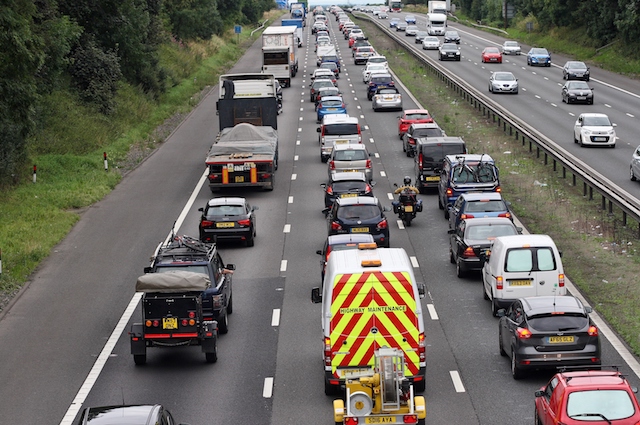Local roads will receive a share of a multi-billion pound improvement fund as part of a new investment strategy unveiled by transport secretary, Chris Grayling.
In addition, the transport investment strategy features the proposed creation of a new major road network, which would see a share of the annual National Road Fund, funded by VED, given to local authorities to improve or replace the most important A-roads under their management.
Grayling said the plans aim to improve productivity and connectivity of towns and cities across the country, tackling bottlenecks and traffic jams for road users – and reducing the need for trucks and through-traffic to pass through rural villages on main roads.
“Getting transport spending right is crucial for the country’s future,” Grayling said. “This government is taking the big transport decisions for Britain’s future, like HS2 and Heathrow, while delivering the biggest investment in roads and rail for a generation.”
The proposals for the major road network respond to the Rees Jeffreys Road Fund study last year, which highlighted the disparity between the funding and planning of Britain’s motorways — the strategic road network — and local authority A-roads.
The new plans mean main roads currently overseen by local authorities would share the VED funded National Roads Fund which was previously envisaged to be ring-fenced for national routes. UK VED was £5.8 billion for 2016-17.
The Freight Transport Association (FTA) said the plan is “good news” for the sector, but more investment is needed to upgrade the road network. “FTA believes the government focus on investing in roads that will deliver improved performance, economic growth and reduce bottlenecks is correct,” said FTA’s head of national and regional policy, Christopher Snelling.
“Enhanced road infrastructure can only make Britain’s logistics network and business dealings more efficient.
“However, this extension of use will undoubtedly mean greater calls on one pot of money, so the government will need to support infrastructure investment beyond just that provided by VED.
The Road Haulage Association (RHA) said it welcomed the plans, but warned they needed to be put into action soon. “The proposal of a new major road network across the entire UK will reduce journey times between towns and cities across the country, and will bring long-awaited relief to those whose lives are disrupted by HGV traffic on main roads in rural areas,” said RHA chief executive, Richard Burnett.
“Unlike the many thousands of motorists that use the road network each day as a means of going to and from work, the UKs roads and motorways are a haulier’s workplace. Today’s 44-tonne HGV does eight miles to the gallon and typically covers 73,000 miles per annum. This means every penny counts – it has to.
“The devil lies in the detail. We need to know the timescale for the improvements – many of which will mean major civil engineering projects. These works must be completed on time. The agony of using the UK road network must not be prolonged any longer than necessary,” he concluded.






